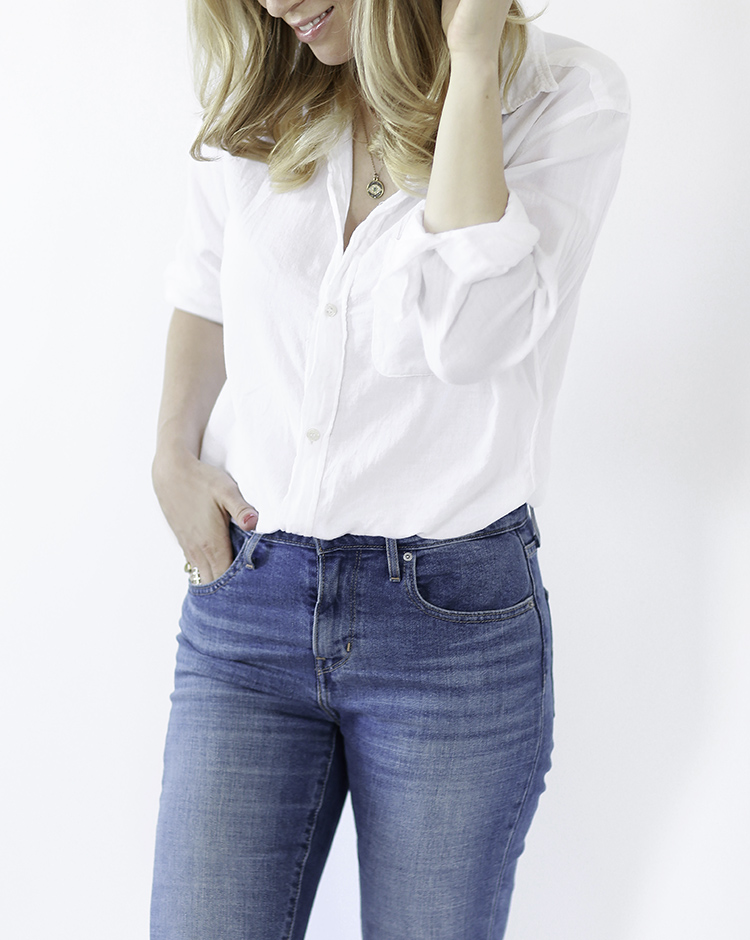
Fashion designers have deemed white fabrics as year round styling for garments. Your customers measure your cleaning by the brightness of the fabrics cleaned. This means removing stains and fine pressing, will not be acceptable to the customer when the garment returned is not as bright white as when received.
Before we explain the problem we should explain what a white fabric is. Color experts have distinguished approximately 300 shades of white ranging from pink white to gray white. The brightest white has been treated in manufacture. Whiteness is related to light white length. A perfectly white fabric would be one that equally reflects all colors present in light. If the fabric absorbs any color the fabric becomes that color to the naked eye.
In a recent article I read they stated that “No bird is totally blue”. The blue color we see is the absorption and reflection of color by the bird’s true pigment.
In producing a white fabric manufacturers must change the natural color white of the fabric into a brighter white fabric. The natural color of a fabric may be gray or yellow and must be chemically altered.
This is done by:
- Bleaching – Manufacturers bleach fabrics to obtain the degree of whiteness desired. Oxidation bleaches are generally used.
- Fluorescent Dye – Dyes that imparts bright color because it absorbs ultraviolet light and emits it as extra visible light. Fluorescent neutralize the yellowness and gray of off white fabrics. When I tested Dupont’s polyester micromatique fabrics to drycleaning, I found that the fabric often lost its fluorescent dye causing it to turn grayish.
- Bluing – A dye used to counteract the yellowness of a fabric. The brightest whites have a slight bluish hue. When white fabrics have been cleaned and held next to a new fabric with a blue tint the blue hue shows a much whiter fabric. When two pieces of a white fabric are placed under a spectograph the one with the blue tint will reflect more light making the fabric appear brighter.
Loss of Brightness in a Fabric
- Redeposition of Soil and Dye – This is a common cause of fabrics turning gray or off white. Soil and dye that comes off other clothes redeposits on to another white fabric that has an affinity for the soil and dye. It is not uncommon for one white fabric in an entire load to turn gray or off color.
- Spotting – Chemicals will often break down fluorescent dyes. In wool and silk protein formulas and ammonia will affect the fluorescent dye. Flushing and neutralizing with a mild acid will often correct the condition. Cotton and rayon will often turn yellow in the presence of an acid and will have to be flushed and neutralized with an alkali.
- Cleaning – After a period washing or cleaning fabrics may lose the bluing and optical brightness causing it to gray and yellow.
- Oxidation – The fluorescent dye of fabrics may break down and yellow from exposure to sunlight.
Testing
- Fluorescent Dyes – A black light or ultra violet light will detect the bright glow of fluorescent dyes on a fabric. When the fluorescent dye is lost the area will be dark and show no brightness.
- Redeposition of Soil – (a) Test for redeposition of soil by applying oily type paint remover and ammonia to an inconspicuous area and tamp. Flush with water and note if fabric turns brighter.
(b) Test for redeposition of dye by applying a titanium stripper to an inconspicuous area, accelerate with hydofluoric acid and flush Note brightness of fabric.
Restoring Brightness to a Fabric
- Redeposition of Soil – Soak fabric in a cleaning machine with a higher solvent level. Add additional soap and some oily type paint remover. Batch for 20 minutes and allow to soak for a few hours. Send solvent to still and run on a regular filtration system. If the fabric permits soak in sodium percarbonate or sodium perborate with a nonionic detergent overnight.
- Redeposition of dye – Soak in a bath using titanium sulphate or sodium hydrosulphate. Rinse and sour.
- Loss of Fluorescent Dye – Wilson Chemical makes a good product called Drogo. This is a two chemical process. One is a soak with sodium hydrosulphate and a fluorescent dye mixture. Follow the manufacturers instructions on mixing.
- Bluing – On white fabrics to get a brighter fabric it may be worthwhile to add a little bluing to the rinse cycle after wetcleaning. Use only 1/8 of a teaspoon per gallon of water. Mrs. Stewarts Bluing found in the supermarkets is a good product.

